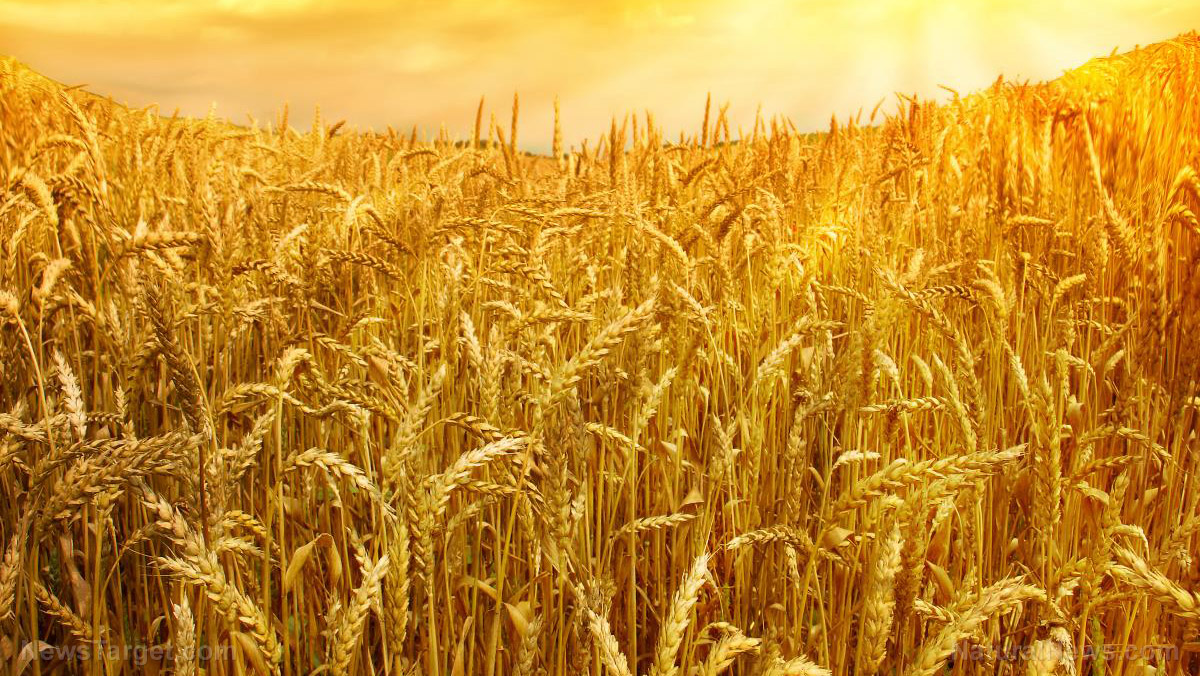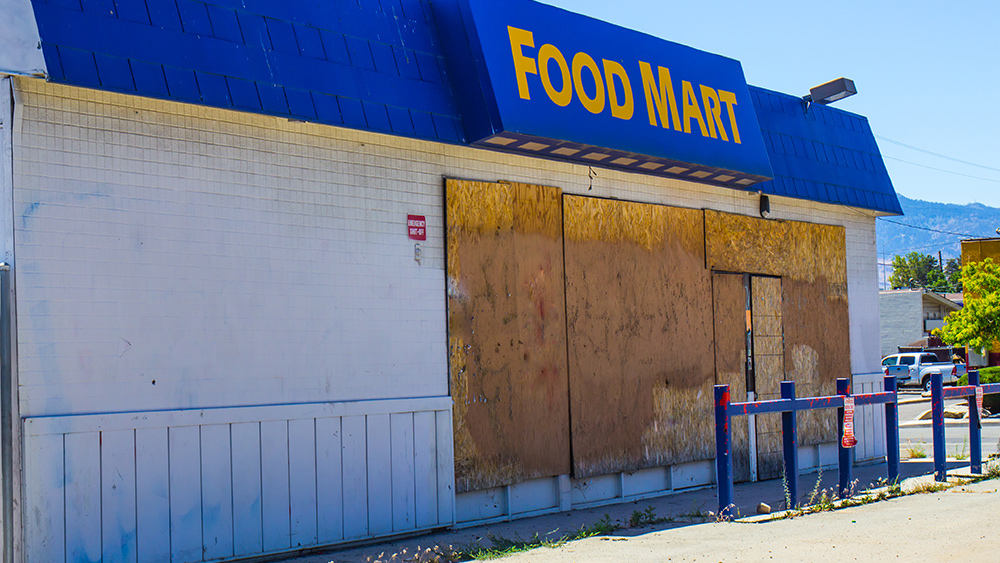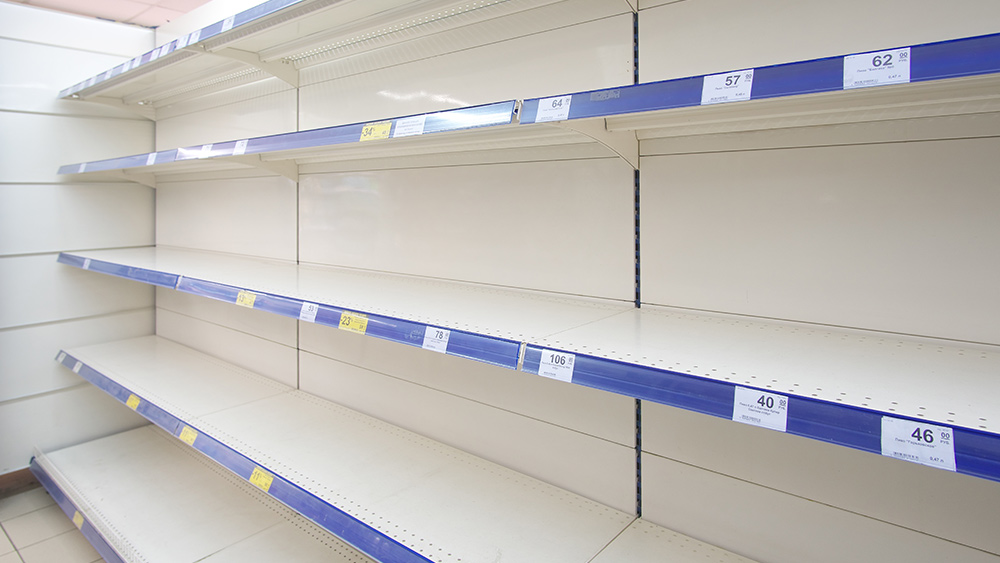Canada’s inflation rate reaches 31-year high; spike in grocery prices highest since 1981
05/25/2022 / By Mary Villareal

Canadians who are living on government benefits are being forced to live with less as food prices soar. Canada’s inflation rate is at 6.8 percent, the highest in 31 years. Grocery prices rose 10 percent year over year, the highest spike since 1981.
Stephen Jones, 56, said that by the end of the month and before they get their paycheck, he is down to eating only once a day. “I am almost on the verge of having to skip meals altogether in a day,” he said.
Jones lives on a CA$1,200 ($936) monthly disability benefit, which has supported him for 15 years after he had to give up his career due to debilitating depression.
This amount is not nearly enough. Jones rents a basement apartment from friends for CA$800 ($624) a month, which is about a third of the current rent for a similar unit. That leaves him with very little to pay for everything else.
In Ontario, where social assistance is at 30-year low, welfare recipients who have no access to subsidized housing are unable to cope with rent increases. Around 30 percent of Ontarians who rent at market rates receive social assistance.
Canada’s Food Price Report, which gauges food-price trends, estimated the cost of food to be at CA$306 ($239) per month in 2022, based on a food-inflation forecast of five to seven percent. (Related: Unemployment now at Great Depression levels, food inflation soaring.)
More and more Canadians turn to food banks
Toronto’s Daily Bread Food Bank reported having around 160,000 visits in March, which is its record high and a 134 percent increase compared to pre-pandemic levels.
Neil Hetherington, chief executive officer at Daily Bread, said that people have already gotten to the end of their savings and are going into debt, so they are turning to food banks even more.
Between the global shortage and the inflation, Canada is facing “a crisis on a crisis.”
“These [inflation] numbers are meals that people will be going without,” Hetherington said, projecting that visits could hit 225,000 per month within a year.
While Canada has a strong record of reducing senior and child poverty through Old Age Security and Guaranteed Income Supplement and federal benefits for families with children, it still lags from other wealthy countries when it comes to providing a safety net for those with disabilities or others in financial need who can’t count on other income supports, such as Employment Insurance.
However, working-age single Canadians who are on welfare or disability benefits are left in dire financial situations. For this group, annual income from basic social assistance benefits and other welfare supports fall short of the poverty line in 2020.
Jones himself believes he will have to turn to food banks eventually. “I know that these places are very accommodating and non-judgmental, but there’s an element of shame in doing that. But at some point, yes, I am definitely going to have to go to a food bank,” he said.
Canadian agriculture expert Kim McConnell said in April that many other Canadians may find themselves in the same position.
Valerie Tarasuk, a professor of nutritional sciences at the University of Toronto, said more and more Canadians will likely face food insecurity.
“As prices of basic commodities rise, it’s very worrisome to think that we have such a large swath of the Canadian population sitting in circumstances which are insufficient to come up with the costs,” she said. (Related: Food manufacturers continue to disguise inflation by gradually shrinking product sizes.)
Provincial governments have been scrambling to implement quick affordability fixes from one-off cash infusions for households to gasoline tax freezes. However, these have done little to increase basic income assistance payments. Instead, some of Canada’s poorest are sinking further into poverty.
The Bank of Canada raised its trend-setting interest rate by three-quarters of a percentage point so far this year. However, economists are expecting several more hikes in the coming months to combat inflation.
Visit Inflation.news for more news related to soaring inflation rates around the world.
Watch the video below for more information on the attacks on the food supply chain in the U.S. and Canada.
This video is from the Global Agenda channel on Brighteon.com.
More related stories:
Food inflation has now reached 12.6% PER MONTH, corporate media blames Putin, not money printing.
Sources include:
Submit a correction >>
Tagged Under:
bubble, Canada, chaos, collapse, debt bomb, debt collapse, economic collapse, economy, federal benefits, food collapse, food prices, food supply, grocery, hunger, inflation, money supply, panic, products, risk, starvation
This article may contain statements that reflect the opinion of the author
RECENT NEWS & ARTICLES
FoodRiots.news is a fact-based public education website published by FoodRiots.news Features, LLC.
All content copyright © 2021 by FoodRiots.news Features, LLC.
Contact Us with Tips or Corrections
All trademarks, registered trademarks and servicemarks mentioned on this site are the property of their respective owners.



















